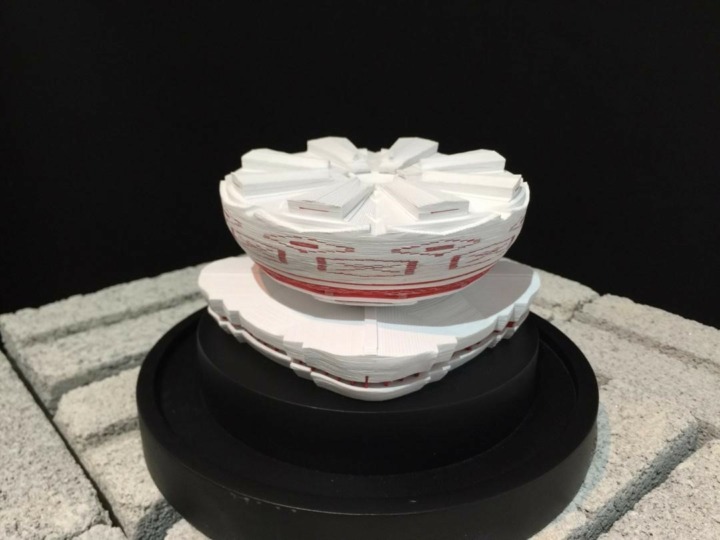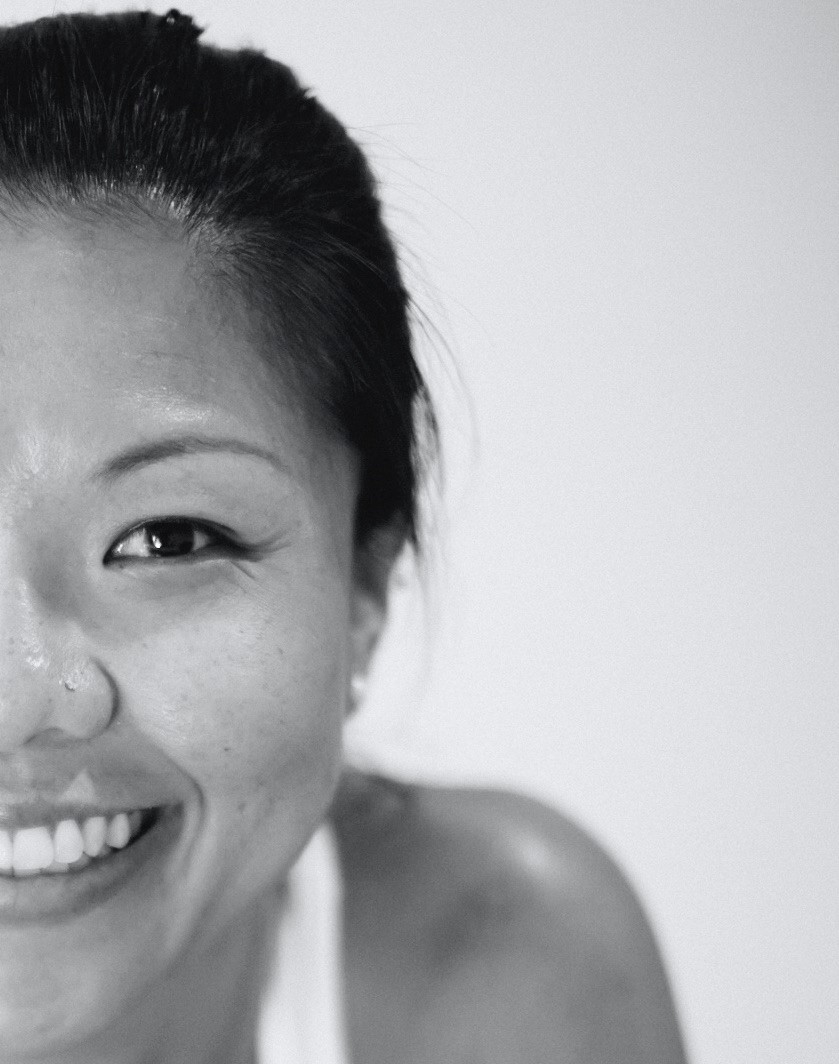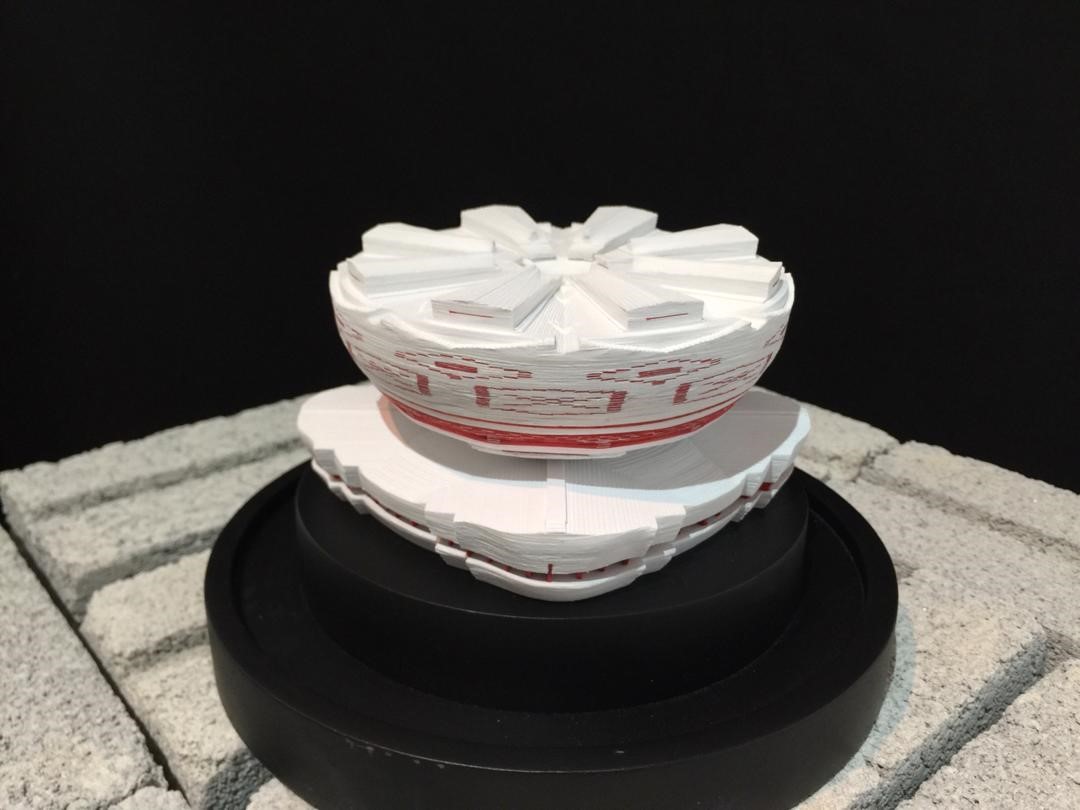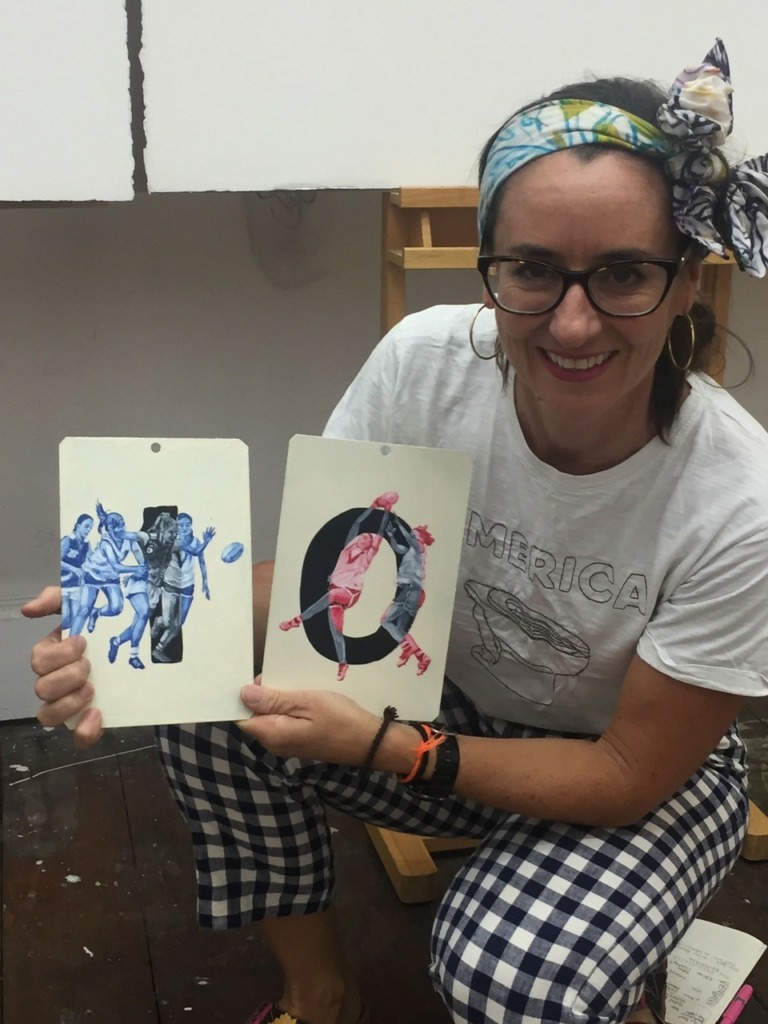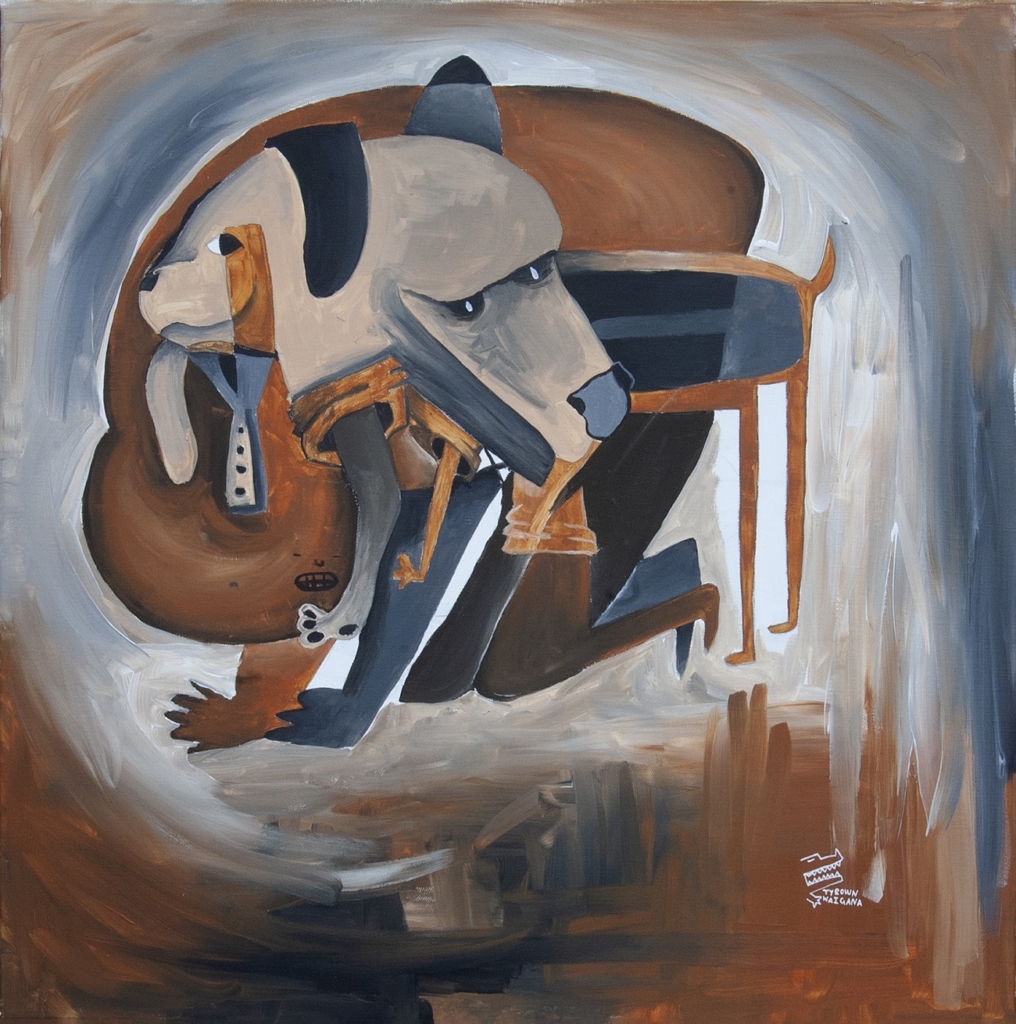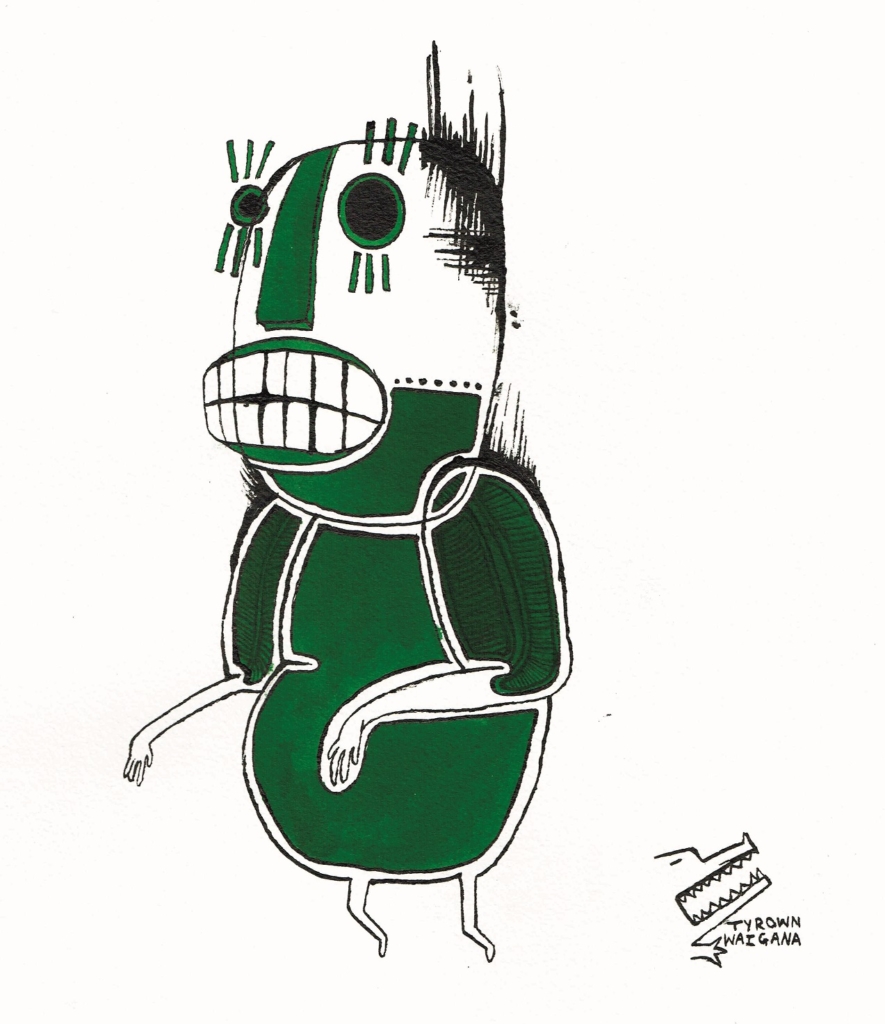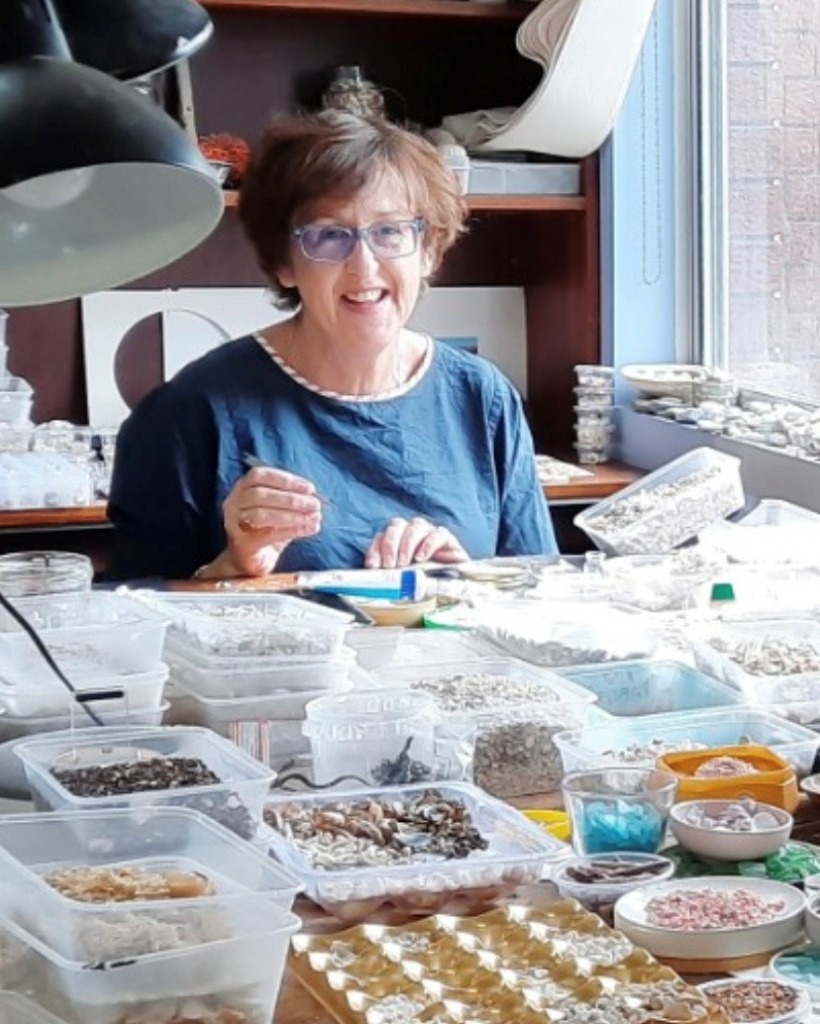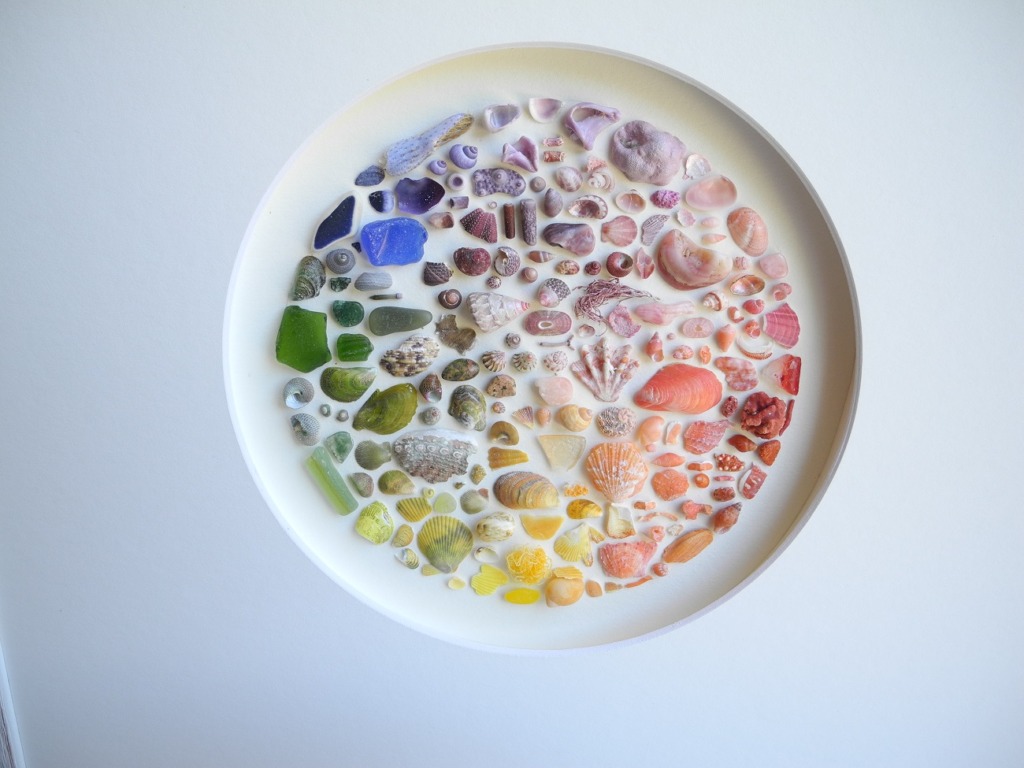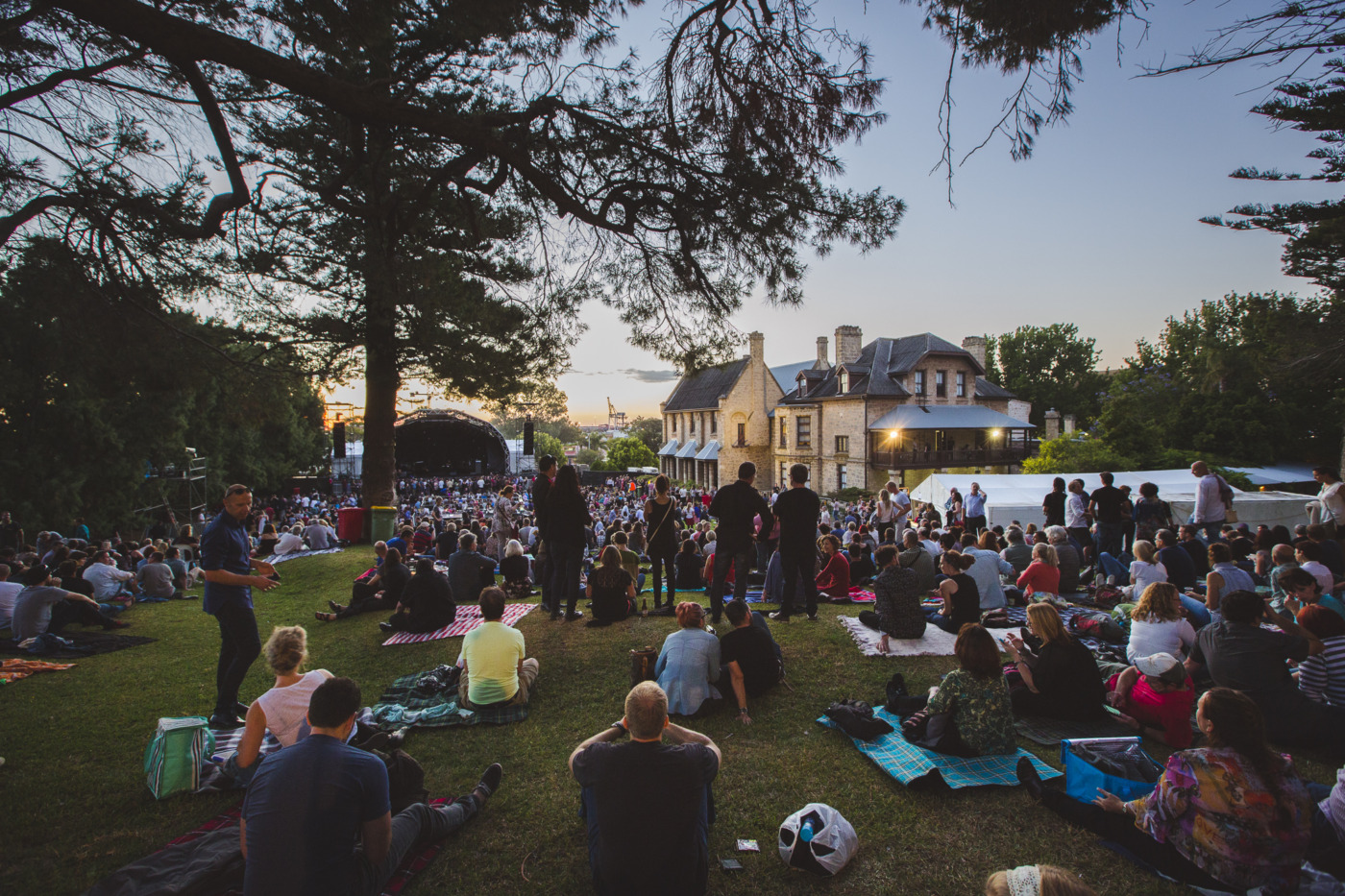This year our Artist in Residence program has had to operate a little differently, not able to welcome the interstate and international artists who usually inhabit our studios. The silver lining is that many more artists from regional WA have been able to take up residency. We recently caught up with Jacky Cheng and Naomie Hatherley to find out more about their practice and what this year has meant for them.
Name: Jacky Cheng
Website: https://jackycheng.com.au/
Instagram: @jackychengart
Tell us about yourself, where you’re based and your practice?
I was born and raised in Kuala Lumpur, Malaysia. I received my Bachelor of Architecture (Honours 1) from the University of New South Wales in 2003. At the same time, I was offered a sessional teaching position at the Faculty of Built Environment at UNSW and was immediately drawn to the creative energy around me.
My introduction into the manipulation of paper was highly influenced by my elders on cultural practices and duties performed for Chinese Ritual purposes. I am most familiar with paper fibres. My competency in working with papers began in my formative years. The women in my family will fold hundreds of joss papers which later include the act of burning the papers to pay respect to our ancestors.
Growing up as a female in Malaysia the creative arts was frowned upon. The phrase ‘I will not invest in you because you will one day lose your surname’ adds to the unfathomable emotion. My journey to gain the trust and respect of my father began when I chose to be an Architect. When I graduated, I became very good at drafting toilet details and that kept my parents happy that I have an ‘occupation’.
However, I was secretly making art from the time I arrived in Australia in 2001. It became apparent to me that making a living out of being an artist was possible. It gave me permission to do what I really loved. I decided on the path to be an artist and later became a part of the creative community in Western Australia. I am currently based in Broome, in a town where the land, people and stories matter.
What are you working on while here on residency?
I have been very fortunate to be one of the lucky recipients of the Resilience Art Grant from Regional Arts WA. My late grandmother left me her mooncake mold and I’ve never once looked at it as a cooking utensil because it is such a beautiful functional sculpture. It tells a story about festivity, culture, community, reunion, identity, family gatherings, mythology and many more auspicious beliefs. I am very interested in exploring mold making and/or replicating the mooncake molds and/or reinterpret my own mooncake mold with my immigrant identity. There are a few facets to this experimentation which include further exploration of using this mold with a medium that I am more familiar with – paper. More importantly, I am excited to play, explore and investigate.
In the context of COVID 19, what’s it meant for your practice to be able to come to FAC to complete your residency?
As Australia is still in political tension with the Chinese government, I cannot help but feel a slight burden on my shoulders. The feeling of isolation during COVID19 is magnified by the racist remarks from world leaders in the media targeting Chinese people irrespective of our nationality.
But we are all in this together right?
The residency opportunity presented to me by FAC really ultimately means I am able to play, explore, investigate, connect with peers, make new artist friends, connect with people I’ve ever only connected via social platform to now seeing them in person. Frankly, I am a little nervous to be amongst all these amazing practicing artists. I am looking forward to all the conversations, constructive criticisms and advice. This is a big deal for a regional artist.
What’s up next?
I will be here in FAC until the end of March (very blessed). 2021 yet again presents another exciting year for my practice where I am growing exponentially with different working groups and people in the creative and built environment industry. Some projects are already in the pipeline and in discussion. Unfortunately, I am unable to disclose anymore than to say… YAY!
One of the ongoing projects that started in 2019 for 2020 was temporarily disrupted due to COVID. In short, I am one of 4 participating Broome artist + 1 international artist working on a collaborative ephemeral public art for the Shinju Matsuri festival in August 2021.
Hopefully, exhibition opportunities arise in the near future and if and when the world opens up safely again, I will be back to Finland to continue my residency.
My residency has been supported in part by the Resilience Art Grant from Regional Arts WA.
Name: Naomie Hatherley
Website: Naomiehatherley.com
Instagram: @n0meshath
Tell us about yourself, where you’re based and your practice?
I am an educator, mother and artist from Broome. I came down to Perth in July for a short residency and have followed it up with this more recent one.
What are you working on while here on residency?
I’m working on a body of work that explores the parallels between women in art and women in sport (AFL). I have been creating works to document the growth and spirit of the women’s game, in effect ‘keeping score’ by referencing key dates and stats in the game across the different league levels using old discarded score tin plates painted with women players that intersect the numbers. For example, did you know the first Australian Rules game played by women was in Perth in 1915? Or that the WAFL agreed to start a women’s league in 1987? I have used my time at FAC to research the women’s game here in WA by meeting with and yarning to die-hard fans, players, coaches and other instrumental insiders in an attempt to characterise the unique culture of the women’s game and collect inspiration for further artwork development.
In the context of COVID 19, what’s it meant for your practice to be able to come to FAC to complete your residency?
Being able to travel in WA was such a privilege, so was being able to talk to and photograph the East Freo Sharks playing in the first rounds of WAFLW games in Perth following lockdown was incredible when I came down in July for my first residency. I was able to establish many contacts that I followed up on for this second residency in November/December, which was brilliant.
What’s up next?
One of my Keeping Score artworks was meant to be exhibited in May at John Curtin Gallery (Curtin University) but was cancelled due to COVID. While this was disappointing it has given me more time to dive deeper into this idea and spend more time reflecting on how a body of work might encapsulate the story of women in football. I’d like to have a more comprehensive body of work together that I hope to exhibit in the near future. In the meantime, I plan to keep documenting the artwork progress on Instagram.
Find out more about our Artist in Residence program
Stall Name: Crawlin Crocodile
Website: crawlincrocodile.com
Instagram: @crawlincrocodile
Tell us a bit about yourself and what you’ll be selling?
I’m a 24-year-old multidisciplinary artist and designer. I am both Aboriginal and Torres Strait Islander. My practice includes painting, illustration, sculpture, animation and graphic design. I’ll be selling a diverse range of items that reflect my practice from my newly published comic book to paintings. Hopefully, there is a little something for everyone.
How do you make the works?
I tend to jump headfirst into my work and allow creation to take form in the moment. I might do some research before I start or come back intermittently. I usually have some ambiguous theme that will drive the way it looks or just completely make it up as I go. My creation is a journey.
Why is it important to support local makers?
You can get something unique that you may not be able to buy anywhere else and your money goes back into the local community.
What’s your top gift tip this Christmas?
You should probably get onto one of my paintings 🙂
Bazaar runs 5–9pm Fri 4 Dec | 9am–5pm Sat 5 & Sun 6 Dec
Stall Name: Semblance
Instagram: @semblance_bymeagan
Tell us a bit about yourself and what you’ll be selling?
My name is Meagan Gardiner and my business is Semblance. I make shadow box style artworks with really carefully arranged found objects such as shells, pressed wildflowers, opal chips, deconstructed watches, and other small & interesting objects that I find.
I grew up on a farm in the Wheatbelt and I started Semblance in 1997 but it was called Cards With A View back then.
How do you make the works? Tell us about your process.
The process of making each piece is slow and time consuming, but I actually really like that part. It’s very meditative! I spend a lot of time bent over a workbench grading things into colours and sizes. The larger pieces can often take weeks to make. It’s a bit like doing a 1,000 piece jigsaw. Sometimes you need a break and a stretch and a cup of tea before you can keep going.
Why is it important to support local makers?
I think it’s important now more than ever to support local makers! We need to grow our communities and a nice way of doing that is getting out into your neighborhood and attending events where you can have conversations with each other. It’s lovely to meet the makers and make connections, whether it’s fresh produce or jewellery.
What do you think makes Bazaar stand out from other markets?
I think the location plays a huge part. It’s such a delightful space and I love the light coming through the trees. I also love the fact that the Bazaar is run over Friday night and the two days of the weekend.
I love the Bazaar so much that it formed a huge part of why my husband and I chose to have our wedding at FAC.
Bazaar runs 5–9pm Fri 4 Dec | 9am–5pm Sat 5 & Sun 6 Dec
Full Name: Dorcas Tinamayi Bennett
Art Centre: Warakurna Artists
Preferred making method: Painting, multi-disciplinary artist
When did you start making art?
2006
What inspires you?
I am inspired by my mother’s art and stories (the late Mrs Nyurapayia Nampitjinpa Bennett). I want to continue her legacy through my art as well as share my own experiences of the Country I live in and the dreamings within it.
Tell us about your work in this year’s Revealed?
At the art centre, the artists have been talking about cultural tourism as well as the Fake Art Harms Culture campaign. In response to these issues some of the more senior artists have worked with the emerging artists to create some postcards of their own. Central to this is the idea of working together and we also want to raise awareness of the good work currently being done by the artists of Warakurna. These postcards are a snapshot of life from the Ngaanyatjarra Lands, from our home to yours.
What’s up next for you after Revealed?
I am always busy, painting and working for Warakurna Artists. I am also the Director of the Warakurna Artists Board. Currently I’m working on some exciting works for Desert Mob and a potential exhibition later in the year.
Find out more about this year’s Revealed Exhibition and join us at the opening, 6:30pm Fri 12 Apr
Full Name: Roger William Boona
Art Centre: Kira Kiro Artists
Preferred making method: Painting, drawing, carving and walkabout
When did you start making art?
I started making art when I was four years old, I learned from my Puddha (grandmother). She would take me out bush and show me everything she was doing. We used to cut some narmarrgar (bark) and get sticks to hold the bark straight. We used wires to bore a hole in the narmarrgar. I used to wonder off in the bush and muck around with fire. My Puddha taught me language. Now I only remember a little bit of the language because the English I learnt in school took over my language. I used to sit with my Puddha all day and people interested in her art would visit. I would help her. She asked me to try to paint and I drew a special Wandjina, but she told me to paint it over and not to reveal it. So I drew animals and that is when I first started to draw the yilarra (barramundi). My grandmother’s eldest sons taught me how to carve boab nuts. I was four years old when I carved my first boab nut. It was a Wandjina and I sold it for $20. The next boab was a bit rough, so I only got $5 for it.
After learning bush skills from Puddha, my grandfather taught me dance in wanga and corroberee.
Life changed after that. Everything changed after that. I went to prison, and the system went good with me. The system wanted to know about my art. One of the officers signed me up for the art class, so I could express myself within the system. I learn more about art with other countrymen who were also with me. We all learned together about different art and different cultures. We listened to each other and talked with other and understood each other. I learned to make and paint boomerangs.
What inspires you?
I want to learn more skills and to be a better artist. I am self taught. I learn from the bush and from my culture. I like to tell stories. No one knows the stories that I know. At school, one of the teachers Miss Paulfry showed me how to draw dragons when I was mucking around on a piece of paper. Now I love cartoons and comics like Dragonball Z. I can draw all the characters. I am mucking around mixing them up in my art. I’ll mix anything up. I can mix warriors and animals, if people want.
Tell us about your work in this year’s Revealed?
I love to paint the local animals from the land. When I lived down with my family from Roebourne and Cossack, I painted a dingo and a goanna on a beach. A woman from Italy loved the painting and bought it for $2,000 and I shared the money with my niece. My sister said if I keep painting I will earn money as an artist. I keep developing my technique as an artist. I experiment a lot, but love to paint local animal and local stories. I like to mix up my art with all my influences, like graffiti and comic-style.
What’s up next after Revealed?
It’s boab season soon, so I’ll be carving up boabs for tourist season in Kalumburu. I will go walkabout and bring some back to carve, earn some money and share it with my family. I want to sell more artwork and earn a living from being an artist.
Find out more about Revealed here.
